#apex wallpaper
Explore tagged Tumblr posts
Text



❥ Like or reblog if you save ✧ 🌟
#epex#kwon yejun#ayden#epex ayden#apex wallpaper#kpop wallpaper#kpop artist#kpop boy group#kpop boys
7 notes
·
View notes
Text
Apex Thunderjaw


Frightening and magnificent~
#aloy#wallpaper#mine#hfw#horizon forbidden west#hfw photomode#virtual photography#vp#apex thunderjaw
8 notes
·
View notes
Photo

my new header image is now free to use (content is in 1080p for desktop) i might make a mobile version if this is popular.
#apex legends#bloodhound#respawn#apex#myaledits#wallpaper#also im an amateur graphic designer so im open to any criticism
16 notes
·
View notes
Text


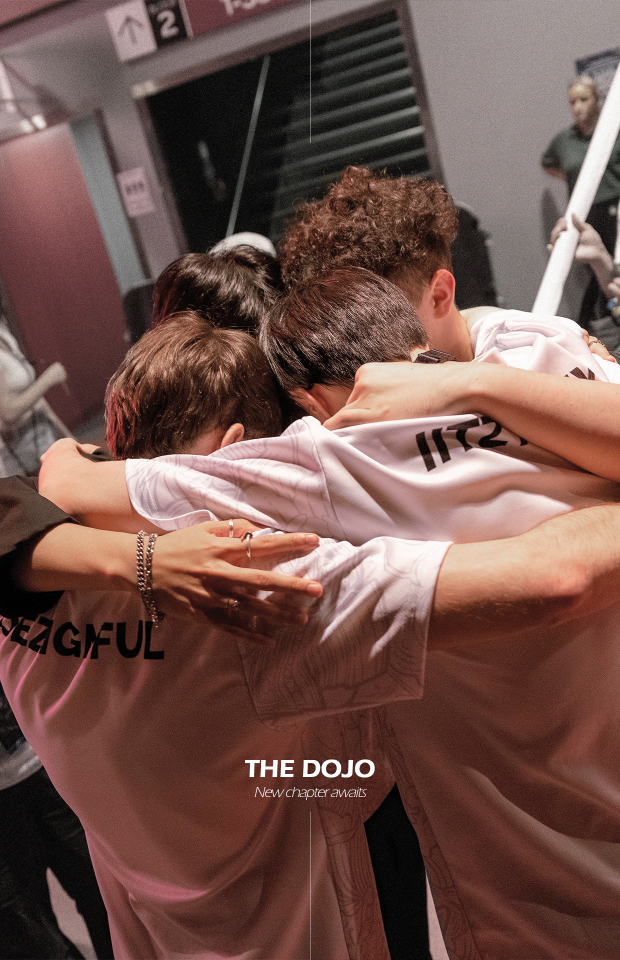
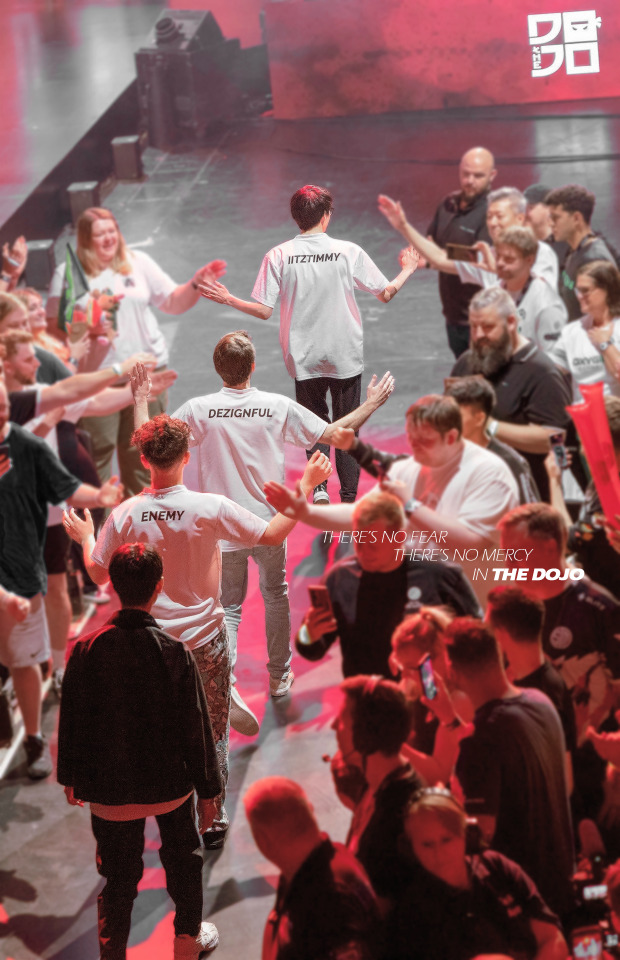


THE DOJO // APEX LEGENDS Lockscreen/Wallpaper | 1240 x 1920 📷 by Jonathon Yau
#the dojo#iitztimmy#enemy#dezignful#apex legends#wallpaper#lockscreen#mine#g: dojo#these were made for myself but thought it was pretty so made a edit post :)#apex comp#competitive apex#algs
2 notes
·
View notes
Text
#animations#video#ios wallpaper#videoart#livewallpapers#video art#wallpaper#wallpapers#digital art#live wallpaper#apex legends
2 notes
·
View notes
Text
Fantasy Guide to Interiors
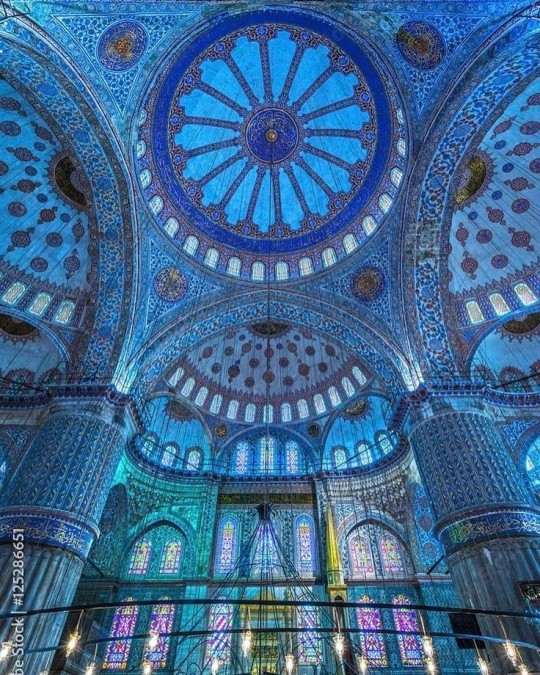
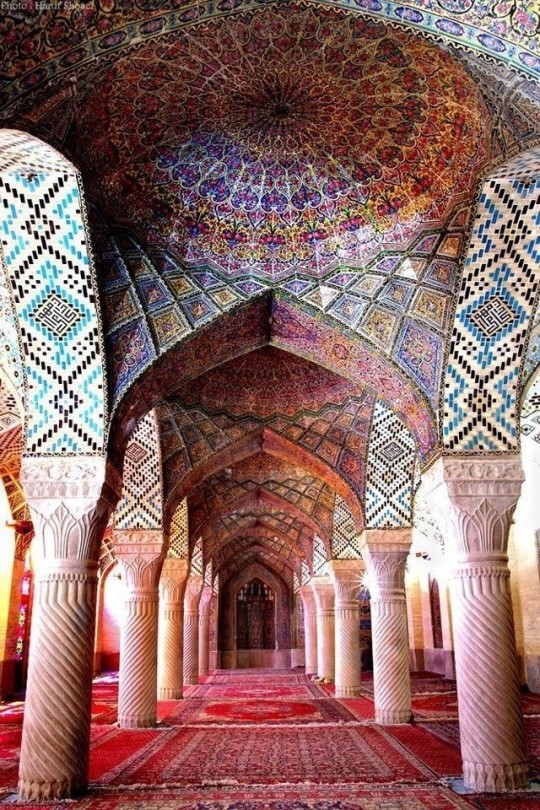
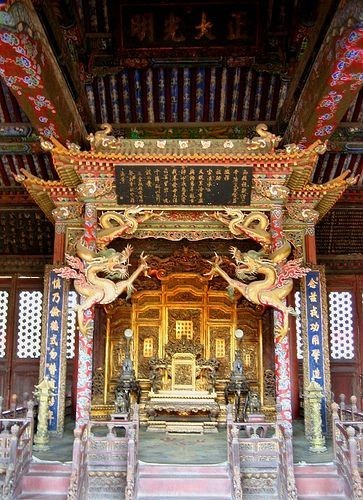
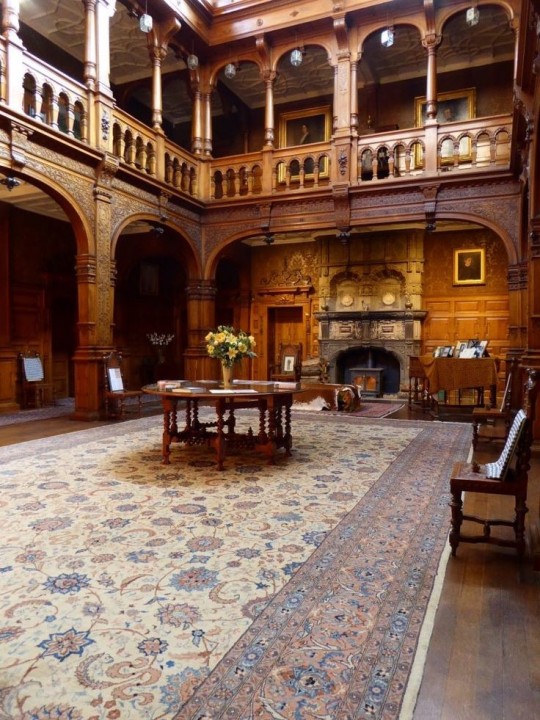
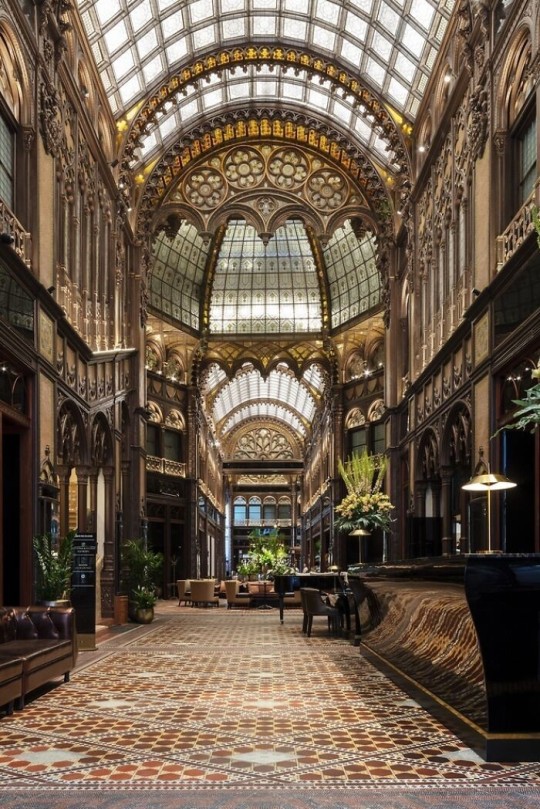
As a followup to the very popular post on architecture, I decided to add onto it by exploring the interior of each movement and the different design techniques and tastes of each era. This post at be helpful for historical fiction, fantasy or just a long read when you're bored.
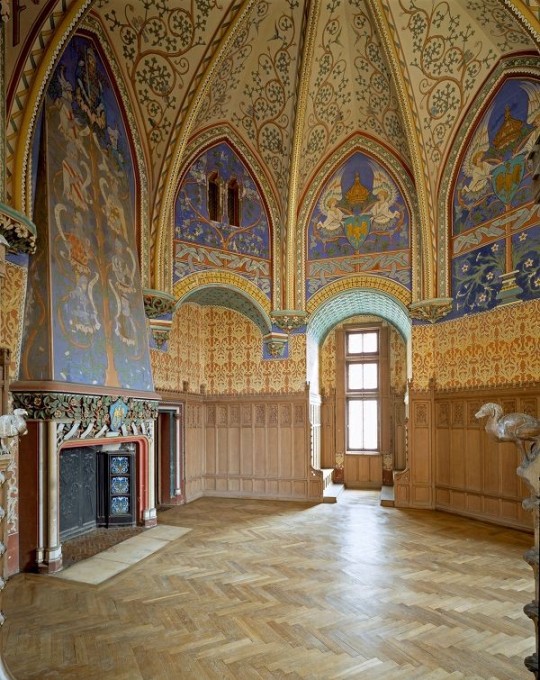
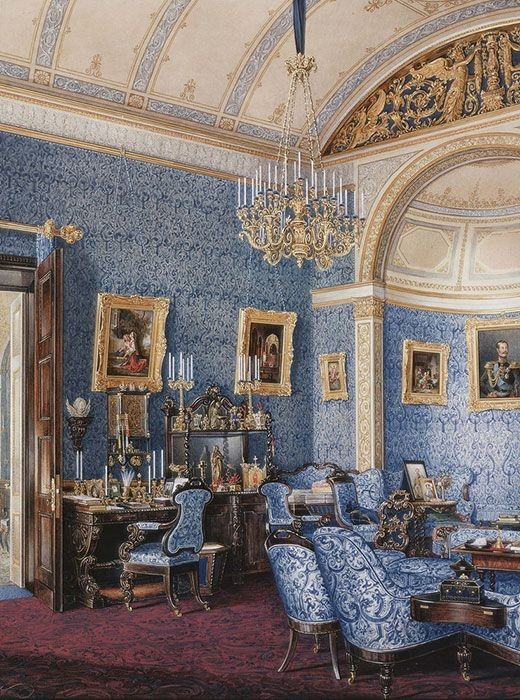
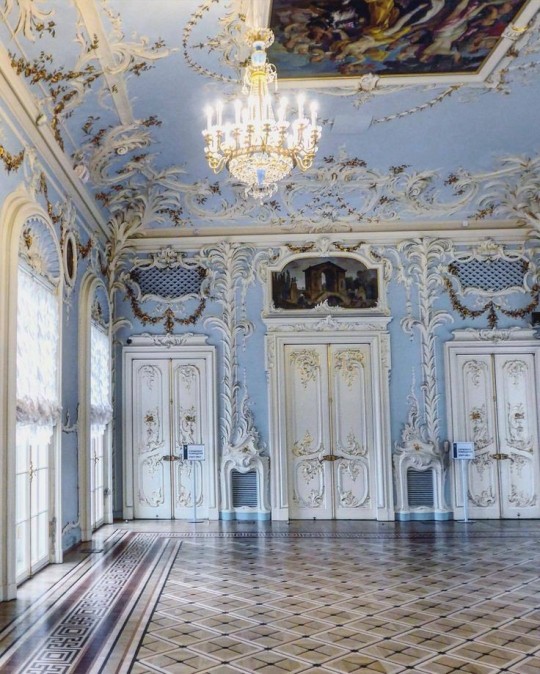
Interior Design Terms
Reeding and fluting: Fluting is a technique that consists a continuous pattern of concave grooves in a flat surface across a surface. Reeding is it's opposite.
Embossing: stamping, carving or moulding a symbol to make it stand out on a surface.
Paneling: Panels of carved wood or fabric a fixed to a wall in a continuous pattern.
Gilding: the use of gold to highlight features.
Glazed Tile: Ceramic or porcelain tiles coated with liquid coloured glass or enamel.
Column: A column is a pillar of stone or wood built to support a ceiling. We will see more of columns later on.
Bay Window: The Bay Window is a window projecting outward from a building.
Frescos: A design element of painting images upon wet plaster.
Mosaic: Mosaics are a design element that involves using pieces of coloured glass and fitted them together upon the floor or wall to form images.
Mouldings: ornate strips of carved wood along the top of a wall.
Wainscoting: paneling along the lower portion of a wall.
Chinoiserie: A European take on East Asian art. Usually seen in wallpaper.
Clerestory: A series of eye-level windows.
Sconces: A light fixture supported on a wall.
Niche: A sunken area within a wall.
Monochromatic: Focusing on a single colour within a scheme.
Ceiling rose: A moulding fashioned on the ceiling in the shape of a rose usually supporting a light fixture.
Baluster: the vertical bars of a railing.
Façade: front portion of a building
Lintel: Top of a door or window.
Portico: a covered structure over a door supported by columns
Eaves: the part of the roof overhanging from the building
Skirting: border around lower length of a wall
Ancient Greece
Houses were made of either sun-dried clay bricks or stone which were painted when they dried. Ground floors were decorated with coloured stones and tiles called Mosaics. Upper level floors were made from wood. Homes were furnished with tapestries and furniture, and in grand homes statues and grand altars would be found. Furniture was very skillfully crafted in Ancient Greece, much attention was paid to the carving and decoration of such things. Of course, Ancient Greece is ancient so I won't be going through all the movements but I will talk a little about columns.
Doric: Doric is the oldest of the orders and some argue it is the simplest. The columns of this style are set close together, without bases and carved with concave curves called flutes. The capitals (the top of the column) are plain often built with a curve at the base called an echinus and are topped by a square at the apex called an abacus. The entablature is marked by frieze of vertical channels/triglyphs. In between the channels would be detail of carved marble. The Parthenon in Athens is your best example of Doric architecture.
Ionic: The Ionic style was used for smaller buildings and the interiors. The columns had twin volutes, scroll-like designs on its capital. Between these scrolls, there was a carved curve known as an egg and in this style the entablature is much narrower and the frieze is thick with carvings. The example of Ionic Architecture is the Temple to Athena Nike at the Athens Acropolis.
Corinthian: The Corinthian style has some similarities with the Ionic order, the bases, entablature and columns almost the same but the capital is more ornate its base, column, and entablature, but its capital is far more ornate, commonly carved with depictions of acanthus leaves. The style was more slender than the others on this list, used less for bearing weight but more for decoration. Corinthian style can be found along the top levels of the Colosseum in Rome.
Tuscan: The Tuscan order shares much with the Doric order, but the columns are un-fluted and smooth. The entablature is far simpler, formed without triglyphs or guttae. The columns are capped with round capitals.
Composite: This style is mixed. It features the volutes of the Ionic order and the capitals of the Corinthian order. The volutes are larger in these columns and often more ornate. The column's capital is rather plain. for the capital, with no consistent differences to that above or below the capital.
Ancient Rome
Rome is well known for its outward architectural styles. However the Romans did know how to add that rizz to the interior. Ceilings were either vaulted or made from exploded beams that could be painted. The Romans were big into design. Moasics were a common interior sight, the use of little pieces of coloured glass or stone to create a larger image. Frescoes were used to add colour to the home, depicting mythical figures and beasts and also different textures such as stonework or brick. The Romans loved their furniture. Dining tables were low and the Romans ate on couches. Weaving was a popular pastime so there would be tapestries and wall hangings in the house. Rich households could even afford to import fine rugs from across the Empire. Glass was also a feature in Roman interior but windows were usually not paned as large panes were hard to make. Doors were usually treated with panels that were carved or in lain with bronze.
Ancient Egypt
Egypt was one of the first great civilisations, known for its immense and grand structures. Wealthy Egyptians had grand homes. The walls were painted or plastered usually with bright colours and hues. The Egyptians are cool because they mapped out their buildings in such a way to adhere to astrological movements meaning on special days if the calendar the temple or monuments were in the right place always. The columns of Egyptian where thicker, more bulbous and often had capitals shaped like bundles of papyrus reeds. Woven mats and tapestries were popular decor. Motifs from the river such as palms, papyrus and reeds were popular symbols used.
Ancient Africa
African Architecture is a very mixed bag and more structurally different and impressive than Hollywood would have you believe. Far beyond the common depictions of primitive buildings, the African nations were among the giants of their time in architecture, no style quite the same as the last but just as breathtaking.
Rwandan Architecture: The Rwandans commonly built of hardened clay with thatched roofs of dried grass or reeds. Mats of woven reeds carpeted the floors of royal abodes. These residences folded about a large public area known as a karubanda and were often so large that they became almost like a maze, connecting different chambers/huts of all kinds of uses be they residential or for other purposes.
Ashanti Architecture: The Ashanti style can be found in present day Ghana. The style incorporates walls of plaster formed of mud and designed with bright paint and buildings with a courtyard at the heart, not unlike another examples on this post. The Ashanti also formed their buildings of the favourite method of wattle and daub.
Nubian Architecture: Nubia, in modern day Ethiopia, was home to the Nubians who were one of the world's most impressive architects at the beginning of the architecture world and probably would be more talked about if it weren't for the Egyptians building monuments only up the road. The Nubians were famous for building the speos, tall tower-like spires carved of stone. The Nubians used a variety of materials and skills to build, for example wattle and daub and mudbrick. The Kingdom of Kush, the people who took over the Nubian Empire was a fan of Egyptian works even if they didn't like them very much. The Kushites began building pyramid-like structures such at the sight of Gebel Barkal
Japanese Interiors
Japenese interior design rests upon 7 principles. Kanso (簡素)- Simplicity, Fukinsei (不均整)- Asymmetry, Shizen (自然)- Natural, Shibumi (渋味) – Simple beauty, Yugen (幽玄)- subtle grace, Datsuzoku (脱俗) – freedom from habitual behaviour, Seijaku (静寂)- tranquillity.
Common features of Japanese Interior Design:
Shoji walls: these are the screens you think of when you think of the traditional Japanese homes. They are made of wooden frames, rice paper and used to partition
Tatami: Tatami mats are used within Japanese households to blanket the floors. They were made of rice straw and rush straw, laid down to cushion the floor.
Genkan: The Genkan was a sunken space between the front door and the rest of the house. This area is meant to separate the home from the outside and is where shoes are discarded before entering.
Japanese furniture: often lowest, close to the ground. These include tables and chairs but often tanked are replaced by zabuton, large cushions. Furniture is usually carved of wood in a minimalist design.
Nature: As both the Shinto and Buddhist beliefs are great influences upon architecture, there is a strong presence of nature with the architecture. Wood is used for this reason and natural light is prevalent with in the home. The orientation is meant to reflect the best view of the world.
Islamic World Interior
The Islamic world has one of the most beautiful and impressive interior design styles across the world. Colour and detail are absolute staples in the movement. Windows are usually not paned with glass but covered in ornate lattices known as jali. The jali give ventilation, light and privacy to the home. Islamic Interiors are ornate and colourful, using coloured ceramic tiles. The upper parts of walls and ceilings are usually flat decorated with arabesques (foliate ornamentation), while the lower wall areas were usually tiled. Features such as honeycombed ceilings, horseshoe arches, stalactite-fringed arches and stalactite vaults (Muqarnas) are prevalent among many famous Islamic buildings such as the Alhambra and the Blue Mosque.
Byzantine (330/395–1453 A. D)
The Byzantine Empire or Eastern Roman Empire was where eat met west, leading to a melting pot of different interior designs based on early Christian styles and Persian influences. Mosaics are probably what you think of when you think of the Byzantine Empire. Ivory was also a popular feature in the Interiors, with carved ivory or the use of it in inlay. The use of gold as a decorative feature usually by way of repoussé (decorating metals by hammering in the design from the backside of the metal). Fabrics from Persia, heavily embroidered and intricately woven along with silks from afar a field as China, would also be used to upholster furniture or be used as wall hangings. The Byzantines favoured natural light, usually from the use of copolas.
Indian Interiors
India is of course, the font of all intricate designs. India's history is sectioned into many eras but we will focus on a few to give you an idea of prevalent techniques and tastes.
The Gupta Empire (320 – 650 CE): The Gupta era was a time of stone carving. As impressive as the outside of these buildings are, the Interiors are just as amazing. Gupta era buildings featured many details such as ogee (circular or horseshoe arch), gavaksha/chandrashala (the motif centred these arches), ashlar masonry (built of squared stone blocks) with ceilings of plain, flat slabs of stone.
Delhi Sultanate (1206–1526): Another period of beautifully carved stone. The Delhi sultanate had influence from the Islamic world, with heavy uses of mosaics, brackets, intricate mouldings, columns and and hypostyle halls.
Mughal Empire (1526–1857): Stonework was also important on the Mughal Empire. Intricately carved stonework was seen in the pillars, low relief panels depicting nature images and jalis (marble screens). Stonework was also decorated in a stye known as pietra dura/parchin kari with inscriptions and geometric designs using colored stones to create images. Tilework was also popular during this period. Moasic tiles were cut and fitted together to create larger patters while cuerda seca tiles were coloured tiles outlined with black.
Chinese Interiors
Common features of Chinese Interiors
Use of Colours: Colour in Chinese Interior is usually vibrant and bold. Red and Black are are traditional colours, meant to bring luck, happiness, power, knowledge and stability to the household.
Latticework: Lattices are a staple in Chinese interiors most often seen on shutters, screens, doors of cabinets snf even traditional beds.
Lacquer: Multiple coats of lacquer are applied to furniture or cabinets (now walls) and then carved. The skill is called Diaoqi (雕漆).
Decorative Screens: Screens are used to partition off part of a room. They are usually of carved wood, pained with very intricate murals.
Shrines: Spaces were reserved on the home to honour ancestors, usually consisting of an altar where offerings could be made.
Of course, Chinese Interiors are not all the same through the different eras. While some details and techniques were interchangeable through different dynasties, usually a dynasty had a notable style or deviation. These aren't all the dynasties of course but a few interesting examples.
Song Dynasty (960–1279): The Song Dynasty is known for its stonework. Sculpture was an important part of Song Dynasty interior. It was in this period than brick and stone work became the most used material. The Song Dynasty was also known for its very intricate attention to detail, paintings, and used tiles.
Ming Dynasty(1368–1644): Ceilings were adorned with cloisons usually featuring yellow reed work. The floors would be of flagstones usually of deep tones, mostly black. The Ming Dynasty favoured richly coloured silk hangings, tapestries and furnishings. Furniture was usually carved of darker woods, arrayed in a certain way to bring peace to the dwelling.
Han Dynasty (206 BC-220 AD): Interior walls were plastered and painted to show important figures and scenes. Lacquer, though it was discovered earlier, came into greater prominence with better skill in this era.
Tang Dynasty (618–907) : The colour palette is restrained, reserved. But the Tang dynasty is not without it's beauty. Earthenware reached it's peak in this era, many homes would display fine examples as well. The Tang dynasty is famous for its upturned eaves, the ceilings supported by timber columns mounted with metal or stone bases. Glazed tiles were popular in this era, either a fixed to the roof or decorating a screen wall.
Romanesque (6th -11th century/12th)
Romanesque Architecture is a span between the end of Roman Empire to the Gothic style. Taking inspiration from the Roman and Byzantine Empires, the Romanesque period incorporates many of the styles. The most common details are carved floral and foliage symbols with the stonework of the Romanesque buildings. Cable mouldings or twisted rope-like carvings would have framed doorways. As per the name, Romansque Interiors relied heavily on its love and admiration for Rome. The Romanesque style uses geometric shapes as statements using curves, circles snf arches. The colours would be clean and warm, focusing on minimal ornamentation.
Gothic Architecture (12th Century - 16th Century)
The Gothic style is what you think of when you think of old European cathedrals and probably one of the beautiful of the styles on this list and one of most recognisable. The Gothic style is a dramatic, opposing sight and one of the easiest to describe. Decoration in this era became more ornate, stonework began to sport carving and modelling in a way it did not before. The ceilings moved away from barreled vaults to quadripartite and sexpartite vaulting. Columns slimmed as other supportive structures were invented. Intricate stained glass windows began their popularity here. In Gothic structures, everything is very symmetrical and even.
Mediaeval (500 AD to 1500)
Interiors of mediaeval homes are not quite as drab as Hollywood likes to make out. Building materials may be hidden by plaster in rich homes, sometimes even painted. Floors were either dirt strewn with rushes or flagstones in larger homes. Stonework was popular, especially around fireplaces. Grand homes would be decorated with intricate woodwork, carved heraldic beasts and wall hangings of fine fabrics.
Renaissance (late 1300s-1600s)
The Renaissance was a period of great artistry and splendor. The revival of old styles injected symmetry and colour into the homes. Frescoes were back. Painted mouldings adorned the ceilings and walls. Furniture became more ornate, fixed with luxurious upholstery and fine carvings. Caryatids (pillars in the shape of women), grotesques, Roman and Greek images were used to spruce up the place. Floors began to become more intricate, with coloured stone and marble. Modelled stucco, sgraffiti arabesques (made by cutting lines through a layer of plaster or stucco to reveal an underlayer), and fine wall painting were used in brilliant combinations in the early part of the 16th century.
Tudor Interior (1485-1603)
The Tudor period is a starkly unique style within England and very recognisable. Windows were fixed with lattice work, usually casement. Stained glass was also in in this period, usually depicting figures and heraldic beasts. Rooms would be panelled with wood or plastered. Walls would be adorned with tapestries or embroidered hangings. Windows and furniture would be furnished with fine fabrics such as brocade. Floors would typically be of wood, sometimes strewn with rush matting mixed with fresh herbs and flowers to freshen the room.
Baroque (1600 to 1750)
The Baroque period was a time for splendor and for splashing the cash. The interior of a baroque room was usually intricate, usually of a light palette, featuring a very high ceiling heavy with detail. Furniture would choke the room, ornately carved and stitched with very high quality fabrics. The rooms would be full of art not limited to just paintings but also sculptures of marble or bronze, large intricate mirrors, moldings along the walls which may be heavily gilded, chandeliers and detailed paneling.
Victorian (1837-1901)
We think of the interiors of Victorian homes as dowdy and dark but that isn't true. The Victorians favoured tapestries, intricate rugs, decorated wallpaper, exquisitely furniture, and surprisingly, bright colour. Dyes were more widely available to people of all stations and the Victorians did not want for colour. Patterns and details were usually nature inspired, usually floral or vines. Walls could also be painted to mimic a building material such as wood or marble and most likely painted in rich tones. The Victorians were suckers for furniture, preferring them grandly carved with fine fabric usually embroidered or buttoned. And they did not believe in minimalism. If you could fit another piece of furniture in a room, it was going in there. Floors were almost eclusively wood laid with the previously mentioned rugs. But the Victorians did enjoy tiled floors but restricted them to entrances. The Victorians were quite in touch with their green thumbs so expect a lot of flowers and greenery inside. with various elaborately decorated patterned rugs. And remember, the Victorians loved to display as much wealth as they could. Every shelf, cabinet, case and ledge would be chocked full of ornaments and antiques.
Edwardian/The Gilded Age/Belle Epoque (1880s-1914)
This period (I've lumped them together for simplicity) began to move away from the deep tones and ornate patterns of the Victorian period. Colour became more neutral. Nature still had a place in design. Stained glass began to become popular, especially on lampshades and light fixtures. Embossing started to gain popularity and tile work began to expand from the entrance halls to other parts of the house. Furniture began to move away from dark wood, some families favouring breathable woods like wicker. The rooms would be less cluttered.
Art Deco (1920s-1930s)
The 1920s was a time of buzz and change. Gone were the refined tastes of the pre-war era and now the wow factor was in. Walls were smoother, buildings were sharper and more jagged, doorways and windows were decorated with reeding and fluting. Pastels were in, as was the heavy use of black and white, along with gold. Mirrors and glass were in, injecting light into rooms. Gold, silver, steel and chrome were used in furnishings and decor. Geometric shapes were a favourite design choice. Again, high quality and bold fabrics were used such as animal skins or colourful velvet. It was all a rejection of the Art Noveau movement, away from nature focusing on the man made.
Modernism (1930 - 1965)
Modernism came after the Art Deco movement. Fuss and feathers were out the door and now, practicality was in. Materials used are shown as they are, wood is not painted, metal is not coated. Bright colours were acceptable but neutral palettes were favoured. Interiors were open and favoured large windows. Furniture was practical, for use rather than the ornamentation, featuring plain details of any and geometric shapes. Away from Art Deco, everything is straight, linear and streamlined.
#This took forever#I'm very tired#But enjoy#I covered as much as I could find#Fantasy Guide to interiors#interior design#Architecture#writings#writing resources#Writing reference#Writing advice#Writer's research#writing research#Writer's rescources#Writing help#Mediaeval#Renaissance#Chinese Interiors#Japanese Interiors#Indian interiors#writing#writeblr#writing reference#writing advice#writer#spilled words#writers
3K notes
·
View notes
Text


FEATURES OF THE SFW SASUKE PHONE:
black like my soul
permanent sfw sasuke wallpaper so you can always browse safely in public
rotary dial for calling mom
scary face and spinning blades on the back to ward off apex predators (WATCH YOUR FINGIES!!!!)
3 hdmi ports just because
25 notes
·
View notes
Text
My morning started with electricity turning on and off in the whole apartment building and through some association chain it triggered a nice daydream about walking through abandoned neighbourhoods with Hesh and Riley. Dilapidated state of previously lived in houses. Shattered windows exposing their insides like a rotten through skin and muscle patch bares guts and bones of a body. Floors and walls smelling of moldy, mossy wet dust. Dark trails left by rain seeping down through the constructional decay.
There are still plates and bowls left on the kitchen table and counters. Damp cardboard box with cereal long gone past the expiration date. Leaves blown inside with the wind crunch under soles of your boots. This house doesn't know the difference between inside and outside. It's striving for the one thing everything in the universe does.
Full thermodynamic equilibrium. The apex death.
It looks peaceful and painless. Even Riley doesn't disrupt it, trotting through a corridor with the wallpaper flaking off and curling into loose rolls. It feels like you all passed through a invisible barrier that swallowed you into this isolated system following through with its slow disintegration. David's steps fall quieter. His khaki looks muted in colour.
There are little wisps of fog where he exhaled as you follow him. Like this house doesn't fully know what to do with a sudden surge of life in it.
Hesh doesn't pull away when you brush shoulders with him, standing in a living room entry and looking around. Floorboards are springing under your weight, another cavern underneath.
"Do you like the carpet?"
David looks down. Carpet's barely distinguishable from the dirt and wet rot brought through another broken window. You're asking as if you two came shopping for your own living room.
"The pile's too short and coarse. Riley wouldn't like it."
He's right. Riley deserves a much nicer carpet to lounge on. Sometime in the future. You're sure.
#hesh x reader#david hesh walker#call of duty#cod#juju's grumbles#is this writing#am i finally coming back#who knows
17 notes
·
View notes
Text





Haven’t posted here in a hot minute, I’ve been working with apex models in blender and here are some free to use wallpapers/icosn! I have commissions open on fiver for wallpapers, icons, headers and thumbnails(user:pairinf)
#apex crypto#apex fanart#apex loba#apex wraith#apex wattson#apex octane#apex legends#blender#fan art#blender 3d#3d art#commisions open
47 notes
·
View notes
Text
Get to Know the Mun

What's your phone wallpaper? currently Changbin from the ATE concept photos
Last song listened to: Enjoy the Silence - Anberlin
Currently reading: I can't get myself to read right now
Last movie: Coraline
Last show: Kotaro lives alone
What are you wearing right now? Black shorts, black top and amazing shark-slippers
Piercings/Tattoos: nostril and conch / 11 tattoos (some pokemon, some zelda, bloodborne etc.)
Glasses/Contacts? No
Last thing you ate? a bun with vegetarian liverwurst
Favorite Color: lilac and coral
Current obsession: Love and Deepspace, Apex and the ever ongoing obsession with Ateez and Stray Kids
Do you have a crush right now? Just the crush on my fictional boyfriend Sylus
Favorite fictional character: Right now, Sylus from Love and Deepspace
Last place you traveled: I hardly ever travel. Real last thingy was the netherlands
tagged by: @sourspices & @collectivemesses tagging: @eternalbite, @vienrose, @dollieour, @crue11, @vicletnight
5 notes
·
View notes
Note
Hello!
For the progressively worse asks, how about 4, 5 and 9? :)
ooo hi!!
heres the ask list btw
4- If you were a time of day, what time of day would you be?
hmmm... i think im the 2am-4am span of night. theres an apex of time during the night when you feel like you can overcome anything and everything when the rest of the world is quiet and tuned out. its so peaceful and silent during the summer. especially when you want to write. its just got that energy to it that you can do SO much in a little gap of time. Its me. I'm small but my thoughts and character overcomes any and all factors of limited time. i can be anything. while others may use the time to sleep, others might lie awake, someone might be awake working, then theres me whos up creating at the hour because its when all chaos is quiet and its like the buzzing of my brain is controlled.
i have no idea what this question means 💀.
5- What’s your phone wallpaper?
still the same as it was last year. still the same lumity fanart and the timeskip group photo.
9- What song would you want to get kissed to?
HAHA-
kiss me - sixpence none the richer <3
or
chasing cars - snow patrol (though if i was to ever get married THIS is the song i want. but also its genuinely my favorite song in the entire world and yeah. i really like the bridge.... you can just feel a certain image and impression of love and it just moves me.)
2 notes
·
View notes
Text
GET TO KNOW THE MUN.
what’s your phone wallpaper : My lock screen is uh...mygirlfriendbecauseIamaloser and my home screen is a beautiful watercolor styled painting of kame house from dragon ball.
last song you listened to : Drown by Karen O (shout out to dead island 2 for having great aesthetics)
currently reading : i dunno ho w
last movie : oh shit fuck uh...I guess All Quiet On the Western Front 2023? I don't know, sometimes I like good little world war movies. 1917 is good. Dunkirk can get fucked tho, fight me.
last show : uhh h hhh uhhh uh hhuuu OH I started My Hero Academia a few days ago. Got like 3 minutes in but then got tired like an old man and went to bed. I like it though!
what are you wearing right now : uhhhhh....boxers and a t-shirt. is bed time ok
piercings / tattoos? : no piercings, but I have 6 tattoos, all on my forearms. I got three colorful flowers, one big peony, a little paw print, a dark souls 3 inspired tarot card, a moon tarot card, and a skeleton rat with a crown.
glasses ? contacts? : Glasses as I learned last year that I’m a blind ass bitch
last thing you ate? : i think it was a lifesaver? and before that was a uh...adult lunchable
favorite color(s) : fuck man, blue? and yellow? and pink? and a nice wine red? OH and lavender/lilac
current obsession : Dragon Ball Z, Jedi Survivor, Apex, aaaaand Small Town Murder
do you have a crush right now? : I don't know man. Ever seen Revenant from Apex? That guy is p nice-BUT DON’T TELL HIM I SAID THAT
favourite fictional character : I don’t know, man. Ever seen Revenant from Apex? But seriously, him, uhhh Spider-Man, Jon Moxley, future Trunks, uhhhh and Cal Kestis
Tagged by: @the-blackest-spider
Tagging: I really wanted to do this one so I was v thankful for being tagged. Anyone that sees this, please go ahead and do this from me. I love reading these
6 notes
·
View notes
Text
tagged by @nicomrade beloved ! to show my thingys
lockscreen + wallpaper




last song i listened to + last sc i took
the sc is me showing my friend my name in apex bc its so funny to me.
tagging @kittenpunk @scp-3101 and @milfdas if yall wanna do it
2 notes
·
View notes
Text
Fond d’Écran PC Gamer : Comment Choisir et Personnaliser votre Écran de Jeu ?
Le fond d’écran PC gamer n’est pas juste un élément esthétique. Pour de nombreux joueurs, choisir le bon fond d’écran peut améliorer l’expérience de jeu en ajoutant une touche d’excitation et d’immersion. Que vous préfériez des illustrations animées ou des captures d’écran réalistes de vos jeux préférés, voici comment choisir et personnaliser le fond d’écran idéal pour votre PC gamer.
🎯 Pourquoi personnaliser le fond d’écran sur un PC gamer ?
✅ Personnaliser votre espace de jeu pour mieux refléter votre style et vos passions. ✅ Créer une ambiance motivante avant chaque session de jeu. ✅ Apporter du dynamisme à votre bureau virtuel avec des images vibrantes. ✅ Améliorer l’expérience de jeu en rendant l’environnement plus immersif.
💡 Un bon fond d’écran transforme votre PC et renforce l’aspect ludique de votre installation.
🔍 Les meilleurs types de fonds d’écran pour un PC gamer en 2025
📌 1. Fond d’écran basé sur vos jeux préférés
🔹 Fond d’écran de Fortnite, Call of Duty, League of Legends. 🔹 Illustrations ou scènes issues de jeux comme Cyberpunk 2077, The Witcher 3, ou Dark Souls.
💡 Les images de vos jeux favoris apportent un sentiment de connexion et de plaisir.
🎮 2. Fonds d’écran animés pour un effet dynamique
🔹 Animations de personnages en action ou effets visuels de jeux. 🔹 Exemples : fond d’écran animé de Star Wars, Overwatch ou Apex Legends.
💡 Les fonds d’écran animés apportent un côté vivant à votre écran, idéal pour un environnement gamer dynamique.
🌌 3. Fond d’écran avec des paysages de science-fiction ou fantasy
🔹 Paysages de mondes futuristes ou fantastiques (ex : planètes, galaxies). 🔹 Illustrations artistiques inspirées de jeux RPG ou de science-fiction.
💡 Ces fonds d’écran donnent une atmosphère épique et élargissent l’univers de vos jeux.
🖥 4. Fond d’écran minimaliste ou épuré
🔹 Des designs simples avec des éléments géométriques ou des teintes sombres. 🔹 Illustrations abstraites ou graphiques stylisés.
💡 Si vous préférez un look épuré, optez pour des fonds d’écran qui ne distraient pas et qui apportent de la sérénité.
🛠 Comment personnaliser votre fond d’écran pour PC Gamer ?
📍 1. Choisir la bonne résolution
📌 Assurez-vous que votre fond d’écran correspond à la résolution de votre écran (Full HD, 2K, 4K). 📌 Utilisez des sites comme Unsplash, Wallpaper Engine ou DeviantArt pour trouver des images de qualité.
🎮 2. Utiliser des outils de personnalisation
📌 Wallpaper Engine : application permettant de télécharger et de personnaliser des fonds d’écran animés. 📌 Dynamic Theme : pour un fond d’écran changeant selon l’heure de la journée ou vos activités.
💡 Les outils de personnalisation vous permettent de rendre votre expérience encore plus unique.
🔗 Trouvez des fonds d’écran de qualité pour votre PC Gamer
Si vous cherchez des fonds d’écran PC gamer de haute qualité, consultez notre sélection ici : 👉 Tunewtec - PC Gaming
🧐 Conclusion
Le choix du fond d’écran pour votre PC gamer peut influencer votre environnement de jeu. ✅ Optez pour un fond d’écran dynamique pour une expérience immersive. ✅ Les fonds d’écran de vos jeux préférés renforcent l’ambiance du jeu. ✅ Personnalisez votre fond d’écran selon votre style personnel et vos goûts.
0 notes
Text
Komodo Dragons, Wallpaper, and the Wild World of NFTs
There’s something deeply amusing about turning one of the world’s most feared lizards into home decor. Yes, I’m talking about my: Komodo dragon wallpaper. Because nothing says “cozy living room vibes” like rows of venomous apex predators staring at you from your walls. Komodo Dragon Wallpaper NFT on Rodeo Komodo dragons are incredible creatures. These modern-day dinosaurs can grow up to 10…
0 notes
